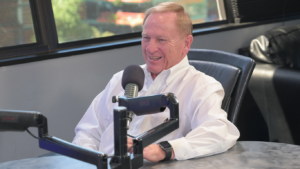Last week, the Federal Reserve cut its interest rate by a quarter point for the second time in two months — a decision that has since initiated questions about whether the Fed is taking too many preemptive steps to defend the U.S. economy.
In July, the Fed cut interest rates for the first time since 2008. Determined to protect the U.S. economy against a global economic slowdown, the Fed decided that a quarter-point decrease would spark domestic investment and help sustain the country’s current economic momentum.
Two months later, the Fed is addressing the same concern. The tit-for-tat tariff war with China has spurred wariness among businesses and investors, who are unwilling to purchase capital and other investments without more clarity about the country’s trade relations with China. As a ripple effect of this uncertainty, the national economy faces threats of a slowdown; Fed Chairman Jerome Powell’s intention is to prevent that slowdown before it happens.
“There will come a time, I suspect, when we think we’ve done enough. But there may also come a time when the economy worsens and we would then have to cut more aggressively,” Powell asserted at a news conference last Wednesday. “We don’t know.”
Seven out of the 10 Fed officials voted to drop the benchmark federal-funds rate from 2 to 1.75 percent. It is the first time that three officials have dissented since Powell became chairman; however, this comes with a caveat that one of the three, St. Louis Fed President James Bullard, voted “no” because he wanted an even larger rate reduction.
Bullard said in a statement last Wednesday that a more aggressive cut now will reduce risk while giving the Fed options for stabilization if that risk never comes to fruition.
The other two — Boston Fed President Eric Rosengren and Kansas City Fed President Esther George — hoped to keep rates constant. Before the decision, they expressed their belief that the economy didn’t need upward momentum from rate cuts.
“It’s a very fair argument to say that if you cut rates now, you can’t cut them later. The Federal Reserve is like a carpenter — it only has one tool. It has a hammer, and that hammer is called interest rates,” said local economist Alan Maguire. “I could make a good argument that the U.S. economy is in pretty good condition — certainly better than average for the last ten to 12 years. If we’re ever going to raise rates, maybe this is the time; that’s sort of an academic argument. On the other hand, we don’t live in the academic world — we live in the real world, and our rates were getting out of whack with the rest of the world.”
Because of the state of the global economy, Powell didn’t have much of a choice in cutting rates, according to Maguire. For example, Germany — Europe’s strongest economy — has seen its interest rates become negative as a result of mounting economic pressure from Brexit and China, as the country relies heavily on exports.
“I don’t know what option Powell has but to recognize where the rest of the world is and kind of adapt to it. Yes, the American economy is the strongest economy in the world right now, but it’s not sufficiently detached, so it doesn’t care,” Maguire said. “It’s a combination of a lot of economic factors and market factors out there, and I think he moved a little bit too fast. I think he thought that maybe the rest of the world would follow, and in fact, they did not.”
Maguire explains that although Powell and the other six Fed officials may have acted too quickly, they still have high enough rates to readjust in the future. Instead of having a sledgehammer, Maguire jokes, the Fed now just has a small mallet at their disposal. It’s still a tool for Powell to use — just a smaller, less forceful one.
“The bottom line is, he did the right things for the ‘academic reasons,’ but it turned out to be too much, too fast, given the reality of the world economy,” Maguire said.
This story was originally published at Chamber Business News.



